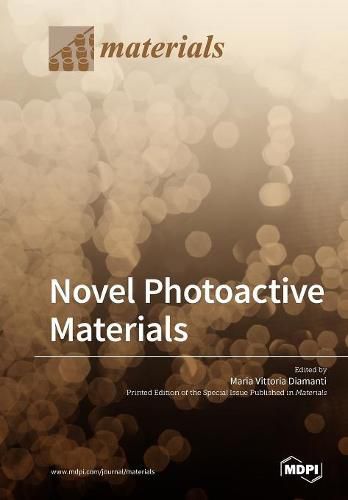Readings Newsletter
Become a Readings Member to make your shopping experience even easier.
Sign in or sign up for free!
You’re not far away from qualifying for FREE standard shipping within Australia
You’ve qualified for FREE standard shipping within Australia
The cart is loading…






This title is printed to order. This book may have been self-published. If so, we cannot guarantee the quality of the content. In the main most books will have gone through the editing process however some may not. We therefore suggest that you be aware of this before ordering this book. If in doubt check either the author or publisher’s details as we are unable to accept any returns unless they are faulty. Please contact us if you have any questions.
Photoactivity represents the ability of a material, generally speaking a semiconductor, to become active when interacting with light. It can be declined in many ways, and several functionalities arising from this behavior of materials can be exploited, all leading to positive repercussions on our environment. There are several classes of effects of photoactivity, all of which have been deeply investigated in the last few decades, allowing to develop more and more efficient materials and devices. All of them share a common point, that is, the interaction of a material with light, although many different materials are taken into account depending on the effect desired–from elemental semiconductors like silicon, to more complex compounds like CdTe or GaAs, to metal oxides like TiO2 and ZnO. Given the broadness of the field, a huge number of works fall within this topic, and new areas of discovery are constantly explored.
The special issue Novel Photoactive Materials has been proposed as a means to present recent developments in the field, and for this reason the articles included touch different aspects of photoactivity, from photocatalysis to photovoltaics to light emitting materials.
$9.00 standard shipping within Australia
FREE standard shipping within Australia for orders over $100.00
Express & International shipping calculated at checkout
This title is printed to order. This book may have been self-published. If so, we cannot guarantee the quality of the content. In the main most books will have gone through the editing process however some may not. We therefore suggest that you be aware of this before ordering this book. If in doubt check either the author or publisher’s details as we are unable to accept any returns unless they are faulty. Please contact us if you have any questions.
Photoactivity represents the ability of a material, generally speaking a semiconductor, to become active when interacting with light. It can be declined in many ways, and several functionalities arising from this behavior of materials can be exploited, all leading to positive repercussions on our environment. There are several classes of effects of photoactivity, all of which have been deeply investigated in the last few decades, allowing to develop more and more efficient materials and devices. All of them share a common point, that is, the interaction of a material with light, although many different materials are taken into account depending on the effect desired–from elemental semiconductors like silicon, to more complex compounds like CdTe or GaAs, to metal oxides like TiO2 and ZnO. Given the broadness of the field, a huge number of works fall within this topic, and new areas of discovery are constantly explored.
The special issue Novel Photoactive Materials has been proposed as a means to present recent developments in the field, and for this reason the articles included touch different aspects of photoactivity, from photocatalysis to photovoltaics to light emitting materials.